Home to more than 550 businesses and approximately 13,000 workers, the Brooklyn Navy Yard is one of the City’s most important industrial waterfront assets. But in the face of climate change, the Yard is vulnerable to an ever increasing number of extreme weather events. To protect the Yard, its workers and businesses, the Brooklyn Navy Yard Development Corporation has created a resilience strategy to begin safeguarding the campus well into the future.
The Brooklyn Navy Yard (“the Yard”) is a 300-acre thriving industrial hub located along three miles of the Brooklyn waterfront and is a major economic engine for New York City and the surrounding region. The Brooklyn Navy Yard Development Corporation (BNYDC), the not-for-profit organization that manages the Yard on behalf of the City of New York, developed the first-of-its-kind resilience strategy on the Brooklyn side of the East River in both scope and scale, to ensure the ongoing success of the Yard.
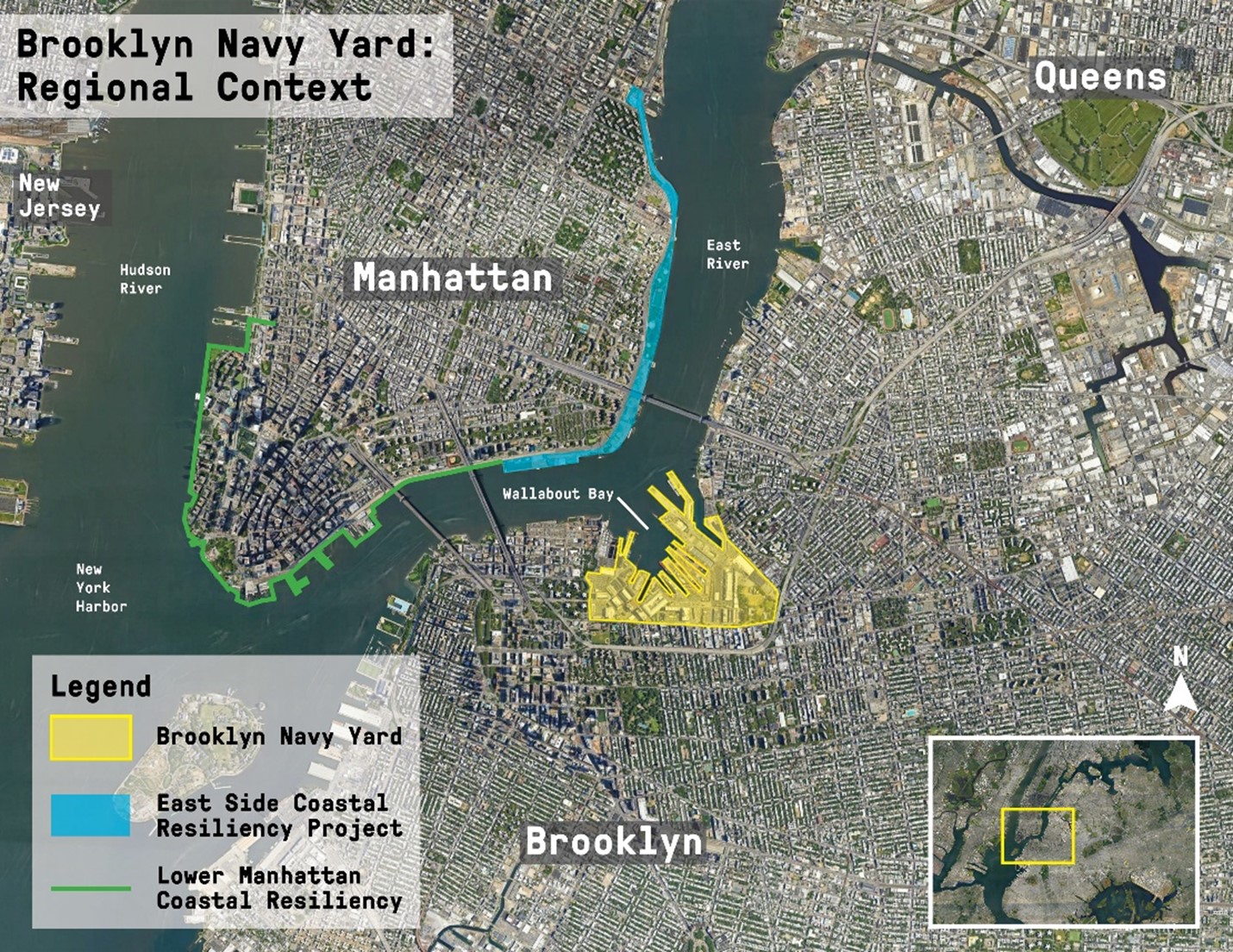
It is widely recognized that climate change is one of the most significant threats facing the world today. New York City experienced the rapidly growing problem first-hand in 2012 when Superstorm Sandy generated 14-foot storm surges and 80 MPH winds that caused significant damage, particularly in low-lying waterfront areas. In the years since, the City has experienced more frequent heavy rainfalls that have resulted in flash flooding, overloading existing century-plus old infrastructure.
Sitting on 3.2 miles of waterfront, the Yard is acutely susceptible to climate change and the destructive effects to industry. During Superstorm Sandy, the Yard was inundated with four to six feet of water that penetrated critical infrastructure, severely damaging buildings, vehicles, and equipment and caused critical service interruptions. The destruction ultimately resulted in $100 million worth of damages. Other extreme weather events, such as a nor’easter in December 1992 and Hurricane Ida in September 2021, have caused severe flooding at the Yard, impairing critical infrastructure and disrupting tenant business operations.
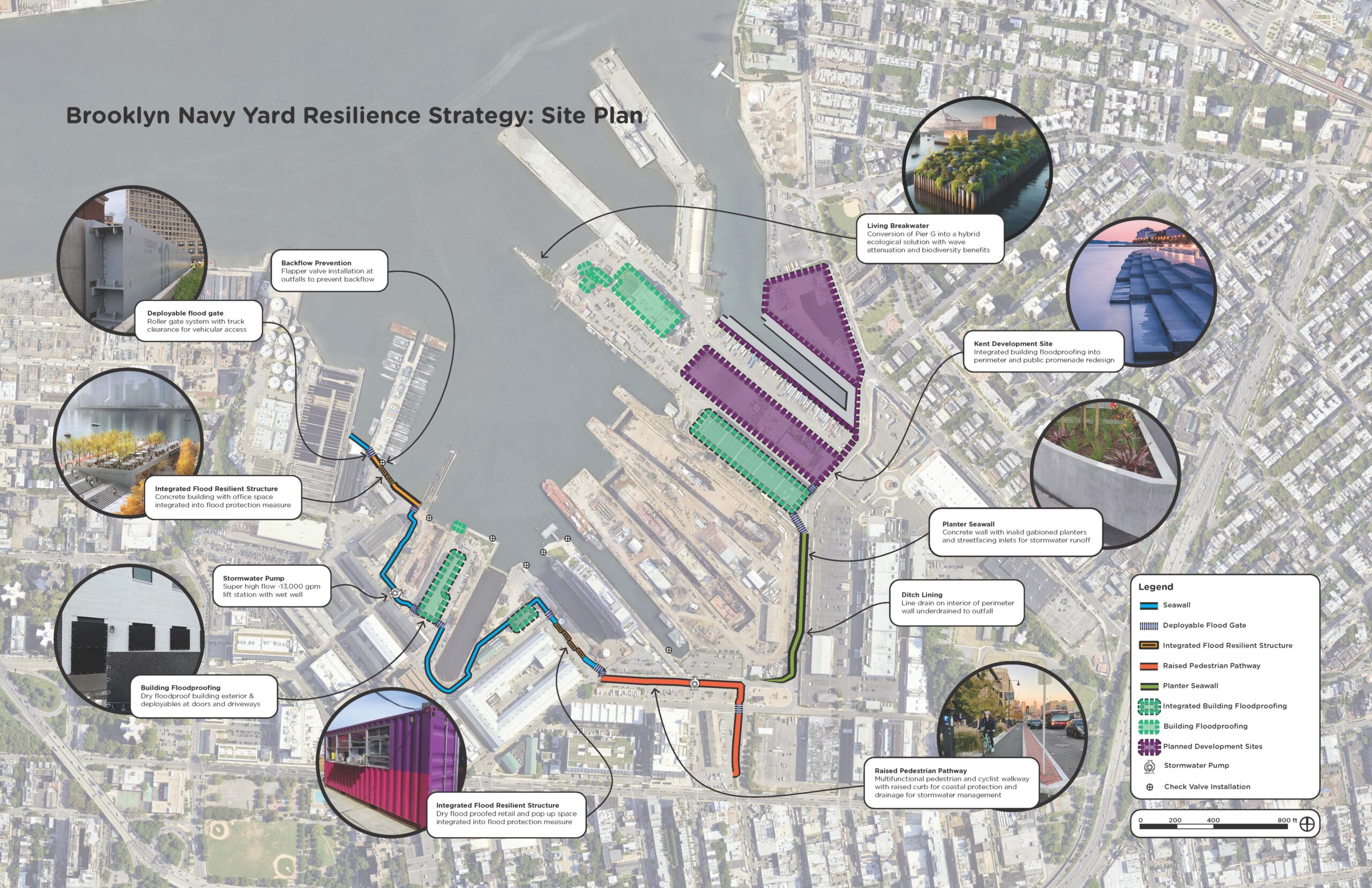
Brooklyn Navy Yard protective barrier consisting of discrete projects that will protect the Yard without impeding core business functions. Source: Ramboll Engineering, 2024
BNYDC Resilience Strategy
Extreme weather events highlight the necessity of developing a proactive, innovative strategy to advance climate adaptation and protect the Yard’s infrastructure, businesses, and workers. Employing predictive climate modeling and forecasting, BNYDC worked with Ramboll Engineering to identify BNY’s risks , constraints, and opportunities. The resulting report is a series of BNY-specific solutions based on priority and effectiveness known as the Brooklyn Navy Yard Resilience Strategy. The strategy has both short- and long-term design solutions, and the following topline goals:
- Protect the Yard from the effects of climate change, most critically, coastal storms and extreme rainfall events
- Tailor protection measures to support the Yard’s mission, its historic interior, and its working waterfront
- Integrate national and international coastal resilience best practices into design solutions
- Inform BNYDC tenants of flood risks so they can actively participate in the Yard’s climate adaptation efforts
Long-term Mitigation Solutions
BNYDC will need to design and construct a series of discrete projects that in tandem will create a protective barrier to safeguard the Yard’s interior. All recommended improvements will be designed with elevations of up to 12-13 feet (above NAVD88 ) in accordance with FEMA standards to best protect the Yard well into the future. Key recommendations include:
- Stormwater backflow preventers and pumps
- Deployable flood gates
- Integrated flood resilient structures
- Multifunctional infrastructure (i.e. raised pedestrian pathways)
- A planter-based seawall
- Elevated public promenade
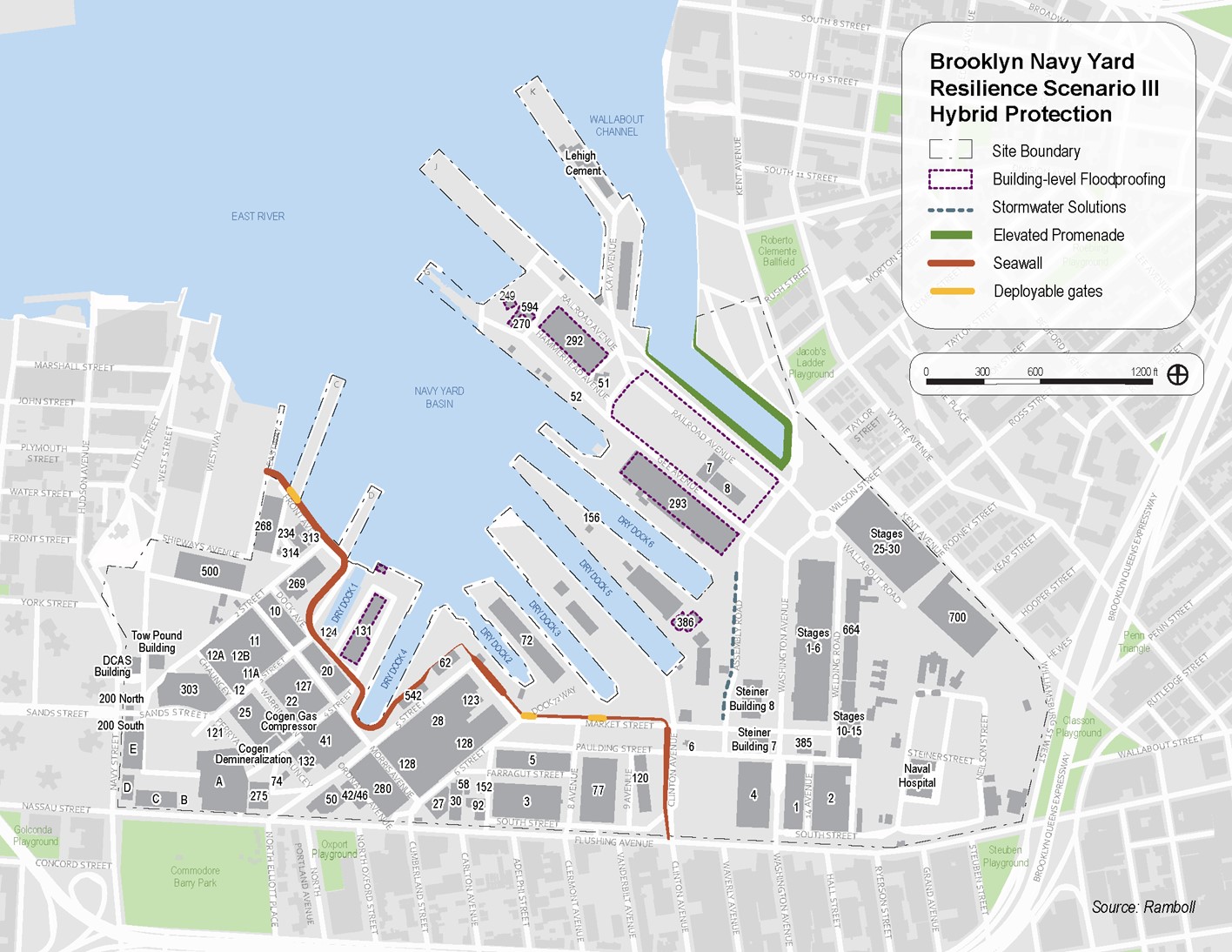
Brooklyn Navy Yard Hybrid Protection Scenario consisting of various protection measures. Source: Ramboll Engineering, 2024.
Short-term Mitigation Solutions
BNYDC developed the Resilience Tenant Toolkit as a resource to help BNY tenants make informed, forward-looking decisions about flood protection for their specific spaces, employees, equipment, systems, and inventory to ensure business continuity. In the toolkit, tenants can learn about the differences between rain-driven and coastal flooding events, and to what extent their building may be affected during and after a storm based on its specific geography and topology. With this information, they can start to develop a strategy, including a preparedness plan, focusing on the five categories below:
- Elevating equipment, inventory, and workstations
- Protecting building openings
- Using flood damage resistant materials
- Protecting critical systems, such as electrical and HVAC
- Using deployable flood barriers to protect building perimeters
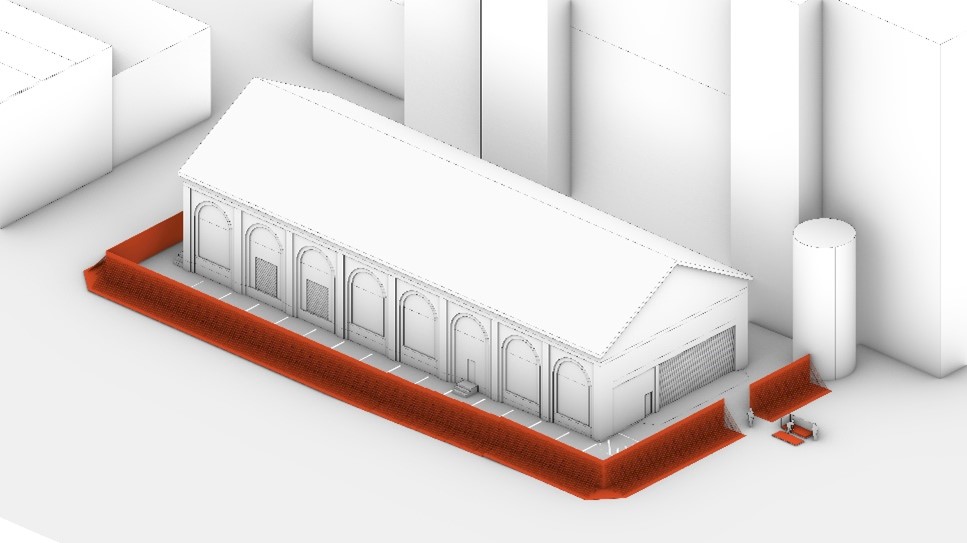 Deployable flood barrier to protect building perimeter. Credit: WXY Studios
Deployable flood barrier to protect building perimeter. Credit: WXY Studios
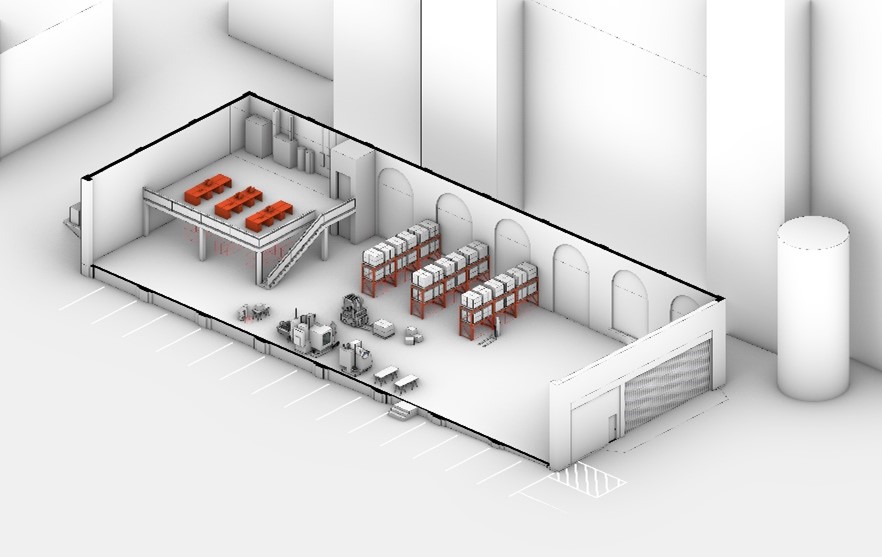 Mezzanine levels to protect workstations and servers. Credit: WXY Studios.
Mezzanine levels to protect workstations and servers. Credit: WXY Studios.
For more information, contact planning@bnydc.org.